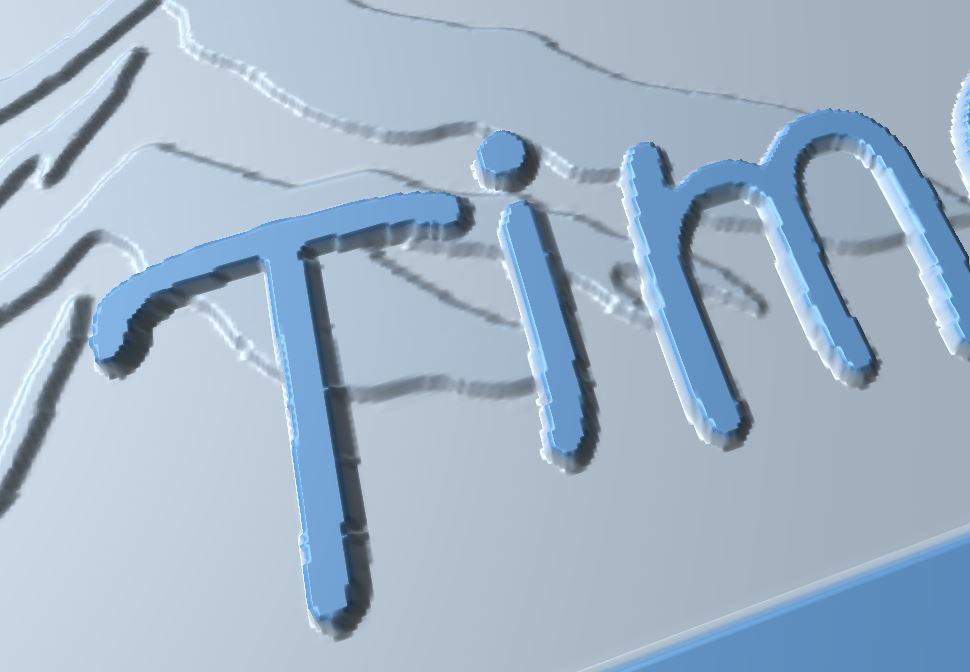 Hi charlie : I'm stumped , I have two layers a raster layer of mountain and a text layer. I do a parallel rough pass first 1/4 EM. My second operation is with a round nose EM to clean up. I wanted to get a crisp outline on the letters like a Vbit profile but can't find the right operation order. The mountain in the back ground has varying heights . Any suggestions to point me in the right direction ? Is the profile operation that will be fixed in the next release the answer ?
Hi charlie : I'm stumped , I have two layers a raster layer of mountain and a text layer. I do a parallel rough pass first 1/4 EM. My second operation is with a round nose EM to clean up. I wanted to get a crisp outline on the letters like a Vbit profile but can't find the right operation order. The mountain in the back ground has varying heights . Any suggestions to point me in the right direction ? Is the profile operation that will be fixed in the next release the answer ?
Thanks Joe



